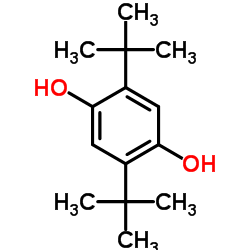Effects of high-affinity inhibitors on partial reactions, charge movements, and conformational States of the Ca2+ transport ATPase (sarco-endoplasmic reticulum Ca2+ ATPase).
Francesco Tadini-Buoninsegni, Gianluca Bartolommei, Maria Rosa Moncelli, Daniel M Tal, David Lewis, Giuseppe Inesi
Index: Mol. Pharmacol. 73(4) , 1134-40, (2008)
Full Text: HTML
Abstract
The inhibitory effects of thapsigargin, cyclopiazonic acid, and 2,5-di(tert-butyl)hydroquinone, and 1,3-dibromo-2,4,6-tri(methylisothiouronium)benzene on the Ca(2+) ATPase were characterized by comparative measurements of sequential reactions of the catalytic and transport cycle, including biochemical measurements and detection of charge movements within a single cycle. In addition, patterns of ATPase proteolytic digestion with proteinase K were derived to follow conformational changes through the cycle or after inhibitor binding. We find that thapsigargin, cyclopiazonic acid, and 2,5-di(tert-butyl)hydroquinone inhibit Ca(2+) binding and catalytic activation as demonstrated with isotopic tracers and lack of charge movement upon addition of Ca(2+) in the absence of ATP. It has been shown previously that binding of these inhibitors requires the E2 conformational state of the ATPase, obtained in the absence of Ca(2+). We demonstrate here that E2 state conformational features are in fact induced by these inhibitors on the ATPase even in the presence of Ca(2+). The resulting dead-end complex interferes with progress of the catalytic and transport cycle. Inhibition by 1,3-dibromo-2,4,6-tri(methylisothiouronium)benzene, on the other hand, is related to interference with a conformational transition of the phosphorylated intermediate (E1 approximately P . 2Ca(2+) to E2-P . 2Ca(2+) transition), as demonstrated by increased phosphoenzyme levels and absence of bound Ca(2+) translocation upon addition of ATP. This transition includes large movements of ATPase headpiece domains and transmembrane segments, produced through utilization of ATP-free energy as the "conformational work" of the pump. We conclude that the mechanism of high-affinity Ca(2+) ATPase inhibitors is based on global effects on protein conformation that interfere with ATPase cycling.
Related Compounds
| Structure | Name/CAS No. | Molecular Formula | Articles |
|---|---|---|---|
 |
2,5-Di-tert-butylhydroquinone
CAS:88-58-4 |
C14H22O2 |
|
Discovery of novel SERCA inhibitors by virtual screening of ...
2011-05-01 [Eur. J. Med. Chem. 46 , 1512-23, (2011)] |
|
Effect of methoxychlor on Ca(2+) movement and viability in M...
2015-03-01 [Basic Clin Pharmacol Toxicol. 111(4) , 224-31, (2012)] |
|
Two distinct calcium pools in the endoplasmic reticulum of H...
2011-04-01 [Biochem. J. 435(1) , 227-35, (2011)] |
|
Functional relevance of the de novo coupling between hTRPC1 ...
2008-04-01 [Cell. Signal. 20(4) , 737-47, (2008)] |
|
Synthesis and SERCA activities of structurally simplified cy...
2011-08-01 [Bioorg. Med. Chem. 19 , 4669-78, (2011)] |